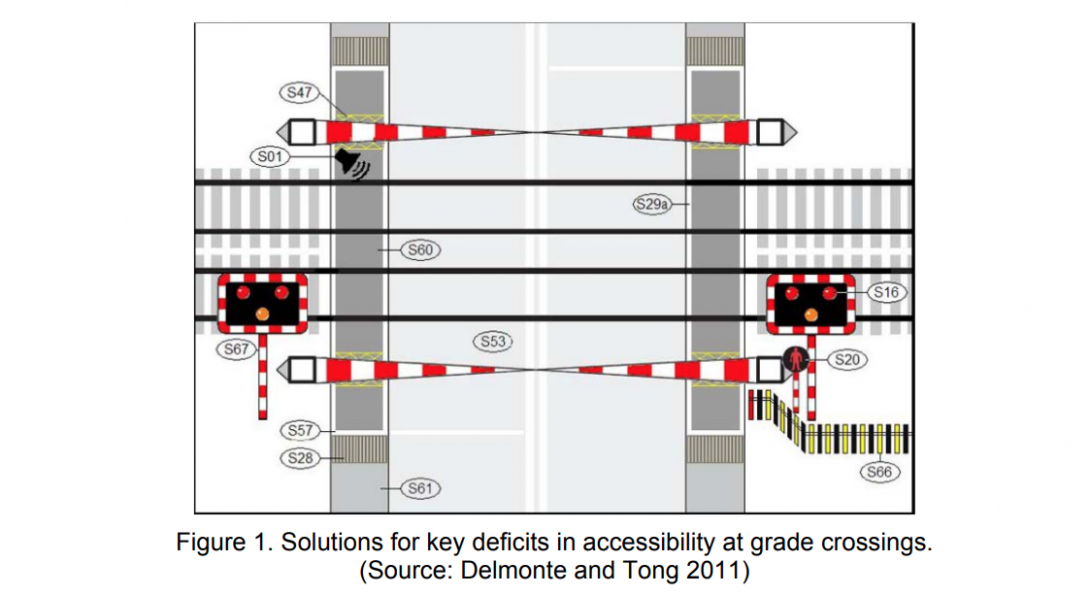Pedestrian/Bicyclist Warning Devices and Signs at Highway-Rail and Pathway-Rail Grade Crossings

Report from the Urban Transportation Center at UIC Covered Metropolitan Chicago, Offers Valuable Insight for Improving National Rail Safety Standards
More powerful messages from local governments and agencies and greater consistency in the design of warning devices are among the tactics needed to help reduce incidents of pedestrians and cyclists from being struck by freight and passenger trains at grade crossings.
Those are two key findings from a survey completed by the Urban Transportation Center (UTC), a research unit at the University of Illinois (UIC) at Chicago.
Researchers concluded that increased education and enforcement from municipalities and transit providers would help build greater awareness and convince pedestrians and cyclists that: It’s illegal to cross railroad tracks while signals or devices are activated; and, it’s considered trespassing to cross at locations outside a designated pedestrian crossing.
A review of signage and electronic warning devices nationwide showed “a distinct lack of standards to analyze/quantify pedestrian risk and design effective treatments to reduce the risk to pedestrians of being struck by a train.” Findings revealed many crossings had in place Manual or Uniform Traffic Control Devices (MUTCD) that complied with federal standards, while “a large number of non-compliant MUTCD signs and devices” are in use.
The objectives of the study, “Pedestrian/Bicyclist Warning Devices and Signs at Highway-Rail and Pathway-Rail Grade Crossings,” were twofold: 1) Identify relevant themes, issues and ways to improve safety. 2) Analyze the attitudes and behavior of pedestrians. The research was led by UIC research associate professor P.S. Sriraj, Ph.D and research assistant professor Paul Metaxatos, Ph.D. and was funded by the Illinois Center for Transportation and CN Railway.
The UTC research team collected data through surveys of pedestrians at 10 “hot spots” in Chicago and its suburbs and through video surveillance to determine the actions and behaviors of non-motorized users of grade crossing. The report also included reviews of published studies on rail grade crossing safety and a survey of state regulatory agencies and industry professionals.
Other key findings from the report are:
- Potential Distractions: Talking on a cell phone, pushing a stroller or listening to music on headphones may interfere with being aware when approaching a rail grade crossing.
- Age Considerations: Younger pedestrians are more likely to be aware of active or electronic warning signs, while older users more frequently noticed passive signs.
- Funding for Improvements: The “vast majority” of available funding for rail grade crossing improvements is allocated to highway crossings. Little funding is earmarked for pedestrian crossings.
- Men vs. Women: Women who responded to field surveys “appear to be more safety conscious” then men when at a grade crossing. Young men (under 21) were the only age group sampled that crossed against activated warning signals.
- Quiet Zone Issues: Pedestrians and cyclists crossing railroad tracks in “quiet zones” may not receive comparable safety warnings as motorists. Those traveling in groups “may not be sufficiently alerted to an incoming train, especially when a second train is coming from the opposite direction.”
A copy of the completed report can be downloaded from this link.